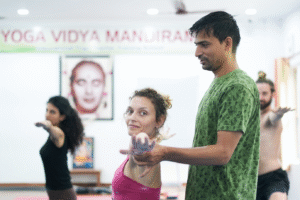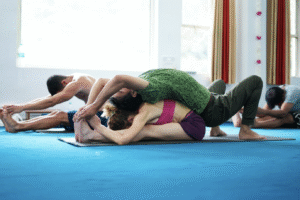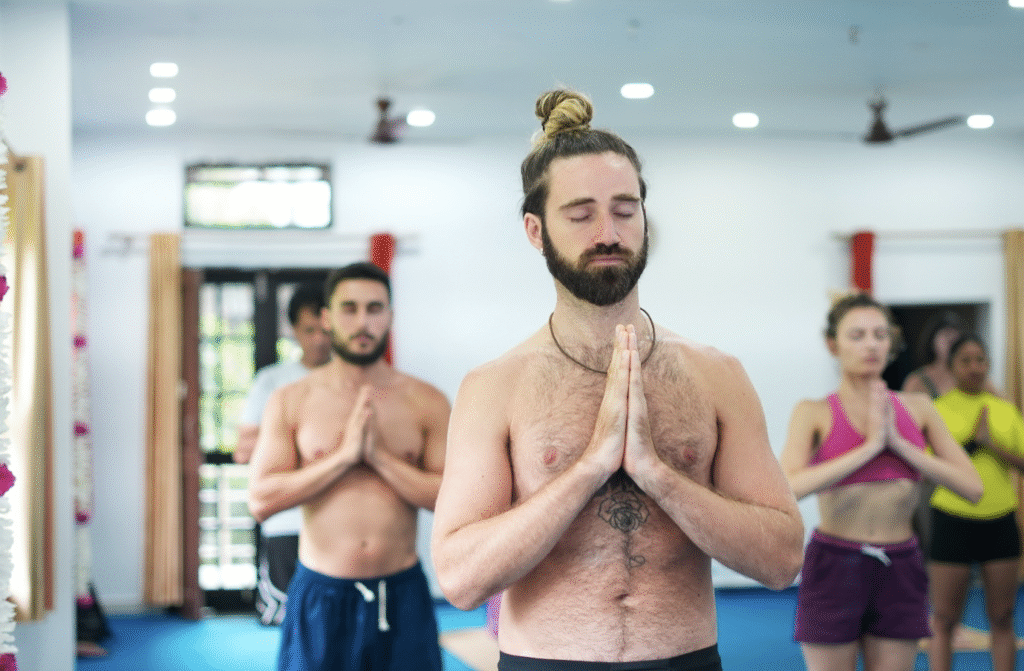Embarking on a 200-hour yoga teacher training (YTT) is often described as a life-changing journey — one that goes far beyond simply learning how to teach yoga. Whether you dream of becoming a certified yoga instructor or wish to deepen your personal practice, this foundational training provides the knowledge, discipline, and self-discovery needed to transform your relationship with yoga.
In this guide, “What to Expect in Your 200-Hour Yoga Teacher Training: A Student’s Guide & Experience,” we’ll walk you through the key elements of the training, including the daily schedule, philosophy, asanas, teaching methodology, and the emotional and spiritual growth you can expect along the way. From preparing yourself mentally and physically to understanding the challenges and breakthroughs, this blog is designed to help you step into your yoga journey with confidence and clarity.
Whether you’re considering a 200-hour YTT in Rishikesh, India, or abroad, this student-centered guide will give you valuable insights into what truly awaits you during this immersive experience.
What is a Yoga Teacher Training?
A Yoga Teacher Training in Rishikesh is an immersive program designed to deepen your understanding of yoga and, if you wish, prepare you for certification as a teacher. Whether your goal is to lead classes or simply expand your personal practice, YTT offers a holistic path toward growth and transformation.
The most popular foundation is the 200-hour Yoga Teacher Training Course (YTTC), which typically includes yoga philosophy, asanas, anatomy, teaching methodology, alignment, meditation, and pranayama, often accredited by Yoga Alliance. Beyond learning techniques, a YTT encourages self-discovery, mindfulness, and a more balanced lifestyle.
Perfect for both beginners and seasoned practitioners, a YTT is not only for future instructors — it’s for anyone seeking clarity, confidence, and a deeper connection with yoga.

What to Expect in Your First Yoga Teacher Training: A Student’s Guide & Experience
1. Introduction: Stepping Into Your Yoga Journey
Joining your first yoga teacher training (YTT) is an exciting milestone, whether your goal is to become a certified yoga instructor or to deepen your personal practice. A 200-hour yoga teacher training is often the foundation, offering a structured blend of theory, practice, and personal transformation. While the idea of committing to several weeks of intensive training may feel overwhelming, knowing what to expect will help you step into the experience with clarity and confidence.
2. A Transformative Experience Beyond the Mat
A YTT is not just about learning yoga postures. It’s a life-changing journey that touches your body, mind, and spirit. Living in a yogic environment introduces you to discipline, mindfulness, and simplicity, creating space for deep personal growth. Many students describe the training as a turning point in their lives, where self-discovery and transformation happen naturally.
3. Structure of a 200-Hour Yoga Teacher Training
The 200-hour yoga teacher training course is the globally recognized standard, often accredited by Yoga Alliance. Typically lasting 3–4 weeks, this program combines philosophy, anatomy, asana practice, pranayama, meditation, and teaching methodology. The comprehensive curriculum ensures that by the end of the training, you are well-prepared both as a practitioner and as a teacher.
4. Daily Schedule: Discipline and Balance
Expect full and structured days during your YTT. Most programs begin around sunrise with meditation and pranayama, followed by morning asana practice, philosophy classes, anatomy workshops, and evening restorative sessions. This rhythm cultivates discipline while giving you a taste of yoga as a lifestyle rather than just an exercise routine.
5. Physical Practice and Asana Training
One of the most common questions beginners ask is whether the training will be too physically demanding. While it does challenge your body, the focus is not on physical perfection but on alignment, breath awareness, and safe practice. Over time, you’ll notice your strength, flexibility, and endurance improving, even if you start with limited experience.
6. Diving Into Yoga Philosophy
Beyond the physical, a YTT immerses you in the spiritual and philosophical roots of yoga. You’ll study ancient texts like The Yoga Sutras of Patanjali, The Bhagavad Gita, and traditional Hatha yoga practices. These teachings connect your physical practice with the deeper purpose of yoga — cultivating mindfulness, compassion, and inner peace.
7. The Power of Pranayama and Meditation
Breathwork and meditation form the essence of yoga. In your training, you’ll explore pranayama techniques that expand lung capacity, calm the nervous system, and energize the body. Meditation practices will help you quiet the mind, build focus, and carry a sense of clarity into your daily life. Many students find these practices to be the most transformative part of YTT.
8. Anatomy and Alignment: Understanding the Body
Safe and effective teaching requires an understanding of the body. During your training, you’ll learn the basics of yoga anatomy, how muscles and joints function, and how to adapt poses for different body types. This knowledge empowers you to avoid injuries and guide students with confidence.
9. Teaching Methodology: Finding Your Voice
Even if teaching feels intimidating at first, your YTT will gradually help you develop the skills to lead classes. You’ll learn sequencing, cueing, hands-on adjustments, and how to use your voice effectively. By the end of the program, most students are able to teach a complete class with clarity and confidence, regardless of their starting point.
10. Building Community and Connection
One of the most rewarding aspects of your YTT is the community you build. You’ll meet people from around the world who share the same passion for yoga and personal growth. Living, practicing, and learning together creates strong bonds, and these connections often turn into lifelong friendships and support networks.

11. Challenges and Breakthroughs Along the Way
Like any transformational journey, a YTT comes with challenges — long hours, physical fatigue, and emotional ups and downs. But it’s through these challenges that breakthroughs happen. Pushing past your comfort zone builds resilience, mindfulness, and a deeper trust in yourself, both on and off the mat.
12. Conclusion: The Beginning of a Lifelong Path
Completing your first 200-hour yoga teacher training is not the end but the beginning of a lifelong yoga journey. You’ll walk away with a certification, valuable teaching skills, and a renewed sense of purpose. More importantly, you’ll carry within you the transformation that comes from self-discipline, community, and deep connection with yoga. With clear expectations, you can step into this journey ready to embrace yoga not just as a practice, but as a way of life.
Final Thoughts: What to Expect in Your 200-Hour Yoga Teacher Training
Embarking on a 200-hour yoga teacher training is more than just an educational program — it’s a life-changing journey that nurtures your body, mind, and spirit. From structured daily routines and in-depth philosophy classes to pranayama, meditation, and teaching practice, every aspect of the training prepares you to live and share yoga with authenticity.
Whether you choose to join a Yoga Alliance certified 200 hour Yoga TTC in Rishikesh, India, or abroad, this immersive experience will help you gain confidence, deepen your self-awareness, and connect with a supportive global yoga community.
Remember, your first YTT is not the end — it’s the beginning of a lifelong path of growth, learning, and transformation. Step in with an open heart, embrace the challenges and breakthroughs, and allow the journey to shape not only your yoga practice but also your way of life.
Namaste ☺️


